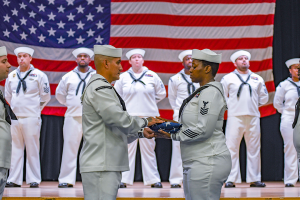For active-duty personnel, the term EAS military signifies a pivotal moment in their careers and lives. It refers to the End of Active Service, marking the conclusion of their commitment and the beginning of a new chapter. Understanding what EAS entails, the steps required to prepare, and the options available can help service members transition confidently and successfully into civilian life. This guide explores what EAS means, the process of separation, and how to approach this important phase with clarity and purpose.
What Does EAS Military Mean?
EAS, or End of Active Service, represents the official end date of a service member’s active-duty contract. This date signifies the point at which their military obligations are completed, barring any extensions or reenlistment. For many, EAS is a time to reflect on their service, evaluate personal goals, and decide on the next steps. While some may opt to continue their careers in the reserves, others may transition to civilian employment, pursue higher education, or start new ventures. Understanding the specifics of EAS allows service members to plan effectively for their post-military lives.
Preparing for the Transition
Preparation is key when approaching EAS. Service members should start planning well in advance to ensure a smooth transition. This involves gathering information about benefits, creating a post-service plan, and exploring resources designed to assist with employment and education opportunities. Early preparation also reduces stress and helps avoid last-minute complications. Engaging in programs that focus on career counseling and skill development can lay a strong foundation for future success. Taking these proactive steps ensures that service members can navigate this transition with confidence.
1. Understanding Separation Leave
Separation leave, often referred to as terminal leave, allows service members to use their accrued leave before their EAS date. This period gives them time to relocate, search for jobs, or adjust to life outside the military. Unlike regular leave, separation leave typically means the member does not return to their duty station. This flexibility can be invaluable in preparing for civilian life. Planning the use of separation leave wisely ensures service members maximize the benefits of this time.
2. Exploring Employment Opportunities
Transitioning to civilian employment is a significant step for many active-duty members. Identifying transferable skills gained during military service can help in finding suitable roles. Service members bring discipline, leadership, and problem-solving abilities to the workforce, qualities that are highly valued by employers. Exploring job fairs, connecting with veteran-friendly employers, and utilizing career transition resources can make the job search process more effective. Developing a strong resume that highlights these skills increases the chances of securing meaningful employment.
3. Healthcare Considerations Post-EAS
Healthcare is another important aspect to address during the transition. Active-duty members and their families lose access to military healthcare upon separation, but options like the Transitional Assistance Management Program (TAMP) provide temporary coverage. Exploring civilian healthcare plans and understanding how benefits change is a necessary step. Staying proactive about healthcare needs prevents potential gaps in coverage and ensures continued access to necessary services.
4. Navigating the Discharge Process
The type of discharge received at EAS significantly impacts future opportunities. An honorable discharge maintains eligibility for most benefits and is viewed favorably by employers. Service members should ensure all documentation is accurate and complete to avoid issues during this process. Seeking guidance from legal or administrative professionals within the military can clarify any uncertainties. Proper management of this step safeguards future benefits and opportunities.
5. Utilizing Transition Assistance Programs
Programs like the Transition Assistance Program (TAP) are designed to support service members during EAS. These programs offer workshops, counseling, and resources tailored to help with career planning, resume writing, and interviewing skills. Participating in these sessions provides valuable insights and connections that ease the shift to civilian life. Leveraging such resources helps service members prepare thoroughly for what lies ahead.
How Zero Nexxus Can Assist
Zero Nexxus specializes in assisting active-duty members during their transition to civilian life. Our tailored services focus on physical and mental well-being, administrative requirements, career guidance, and educational opportunities. We provide personalized transition plans, one-on-one consultations, and user-friendly tools to simplify this complex process. By addressing each individual’s unique needs, we aim to bridge the gaps often left by traditional programs and empower service members to approach their post-military lives with confidence and clarity.
Understanding EAS military is a critical step for active-duty personnel planning their next chapter. By addressing key areas such as employment, education, finances, and family support, service members can navigate this transition successfully. Proper preparation and utilization of available resources create a strong foundation for life beyond the military. With the right approach, EAS becomes an opportunity to achieve personal and professional growth, ensuring a bright future ahead.



